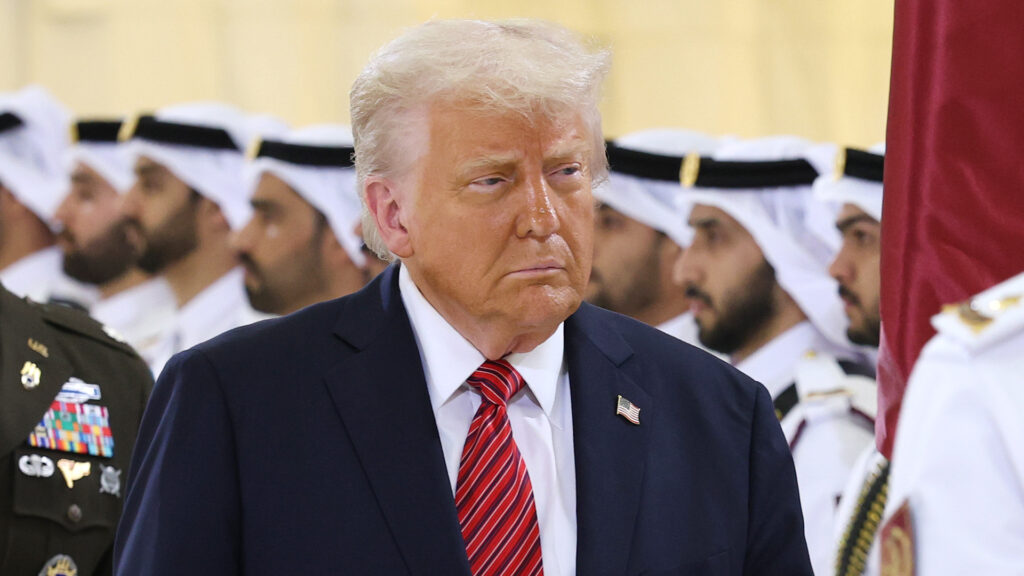President Donald Trump said the United States is getting close to a nuclear deal with Iran. During a Gulf region tour in Doha on Thursday, May 15, Trump told reporters the talks are very serious and suggested Tehran had “sort of” agreed to U.S. terms.
The president described the terms as having a “very, very nice step” and added that “there’s a violent step, but I don’t want to do it the second way.”
According to multiple sources, the U.S. presented Iran with a proposal during a fourth round of negotiations held in Oman. Iranian Foreign Minister Abbas Araghchi took the document back to Tehran for review with President Masoud Pezeshkian, Supreme Leader Ayatollah Ali Khamenei and other senior officials.
What does the US proposal include?
The U.S. proposal calls on Iran to permanently stop enriching uranium to weapons-grade levels and allow international monitors to oversee a civilian nuclear program. Negotiators described it as a framework, not a full accord like the 2015 Joint Comprehensive Plan of Action, which Trump exited in 2018.
Steve Witkoff, Trump’s special envoy to the Middle East, described the proposal as “very big” in a recent briefing to the United Nations Security Council, the Times of Israel reported. Sources familiar with the talks said the U.S. wants Iran to significantly limit enrichment activities, allow inspections and commit to nonproliferation in exchange for lifting sanctions.
Where does Iran stand on enrichment and stockpiles?
Iranian officials signaled a willingness to reduce uranium enrichment to lower levels needed for civilian use. They also indicated they’re ready to decrease the volume of highly enriched uranium in storage, but insisted on maintaining at least the limits allowed under the 2015 agreement.
Ali Shamkhani, a top political, military and nuclear adviser to Iranian Supreme Leader Ayatollah Ali Khamenei, told NBC News that Tehran would accept inspections, give up stockpiles of weapons-grade uranium and enrich only to levels required for energy production if the U.S. lifts all nuclear-related sanctions.
A confidential United Nations report released in February 2025 indicated Iran has enough weapons-grade uranium to produce six nuclear bombs.
“If the Americans act as they say, for sure we can have better relations,” Shamkhani said. “It can lead to a better situation in the near future.”
Officials have yet to come to an agreement over the pace and location of uranium removal and whether Iran can continue enrichment on its own soil.
What are the main sticking points in the talks?
U.S. officials continue to view uranium enrichment inside Iran as a core obstacle. The administration has not confirmed whether it will allow limited enrichment under a new deal. At the same time, Iran maintained that its right to enrich uranium is non-negotiable.
Some officials floated the idea of a regional consortium in which Iran would export enriched uranium to neighboring countries such as Saudi Arabia in exchange for investment. However, this proposal could conflict with the U.S. position and regional security concerns.
Both sides appear to be weighing the benefits of a limited agreement that would stabilize tensions without resolving all outstanding issues. The Trump administration wants to avoid military conflict and emphasized that Iran “cannot have a nuclear weapon.” Iranian advisers warned that Israeli influence could derail the process, while European diplomats threatened to reimpose sanctions if no deal is reached by August.
Iranian and U.S. teams have not scheduled a fifth round of negotiations, but diplomats from Iran and the E3, which consists of France, the United Kingdom and Germany, are expected to meet in Istanbul on Friday, per Reuters. Any final agreement would require approval from Iran’s supreme leadership and would likely trigger further talks to finalize technical details.
contributed to this report.


